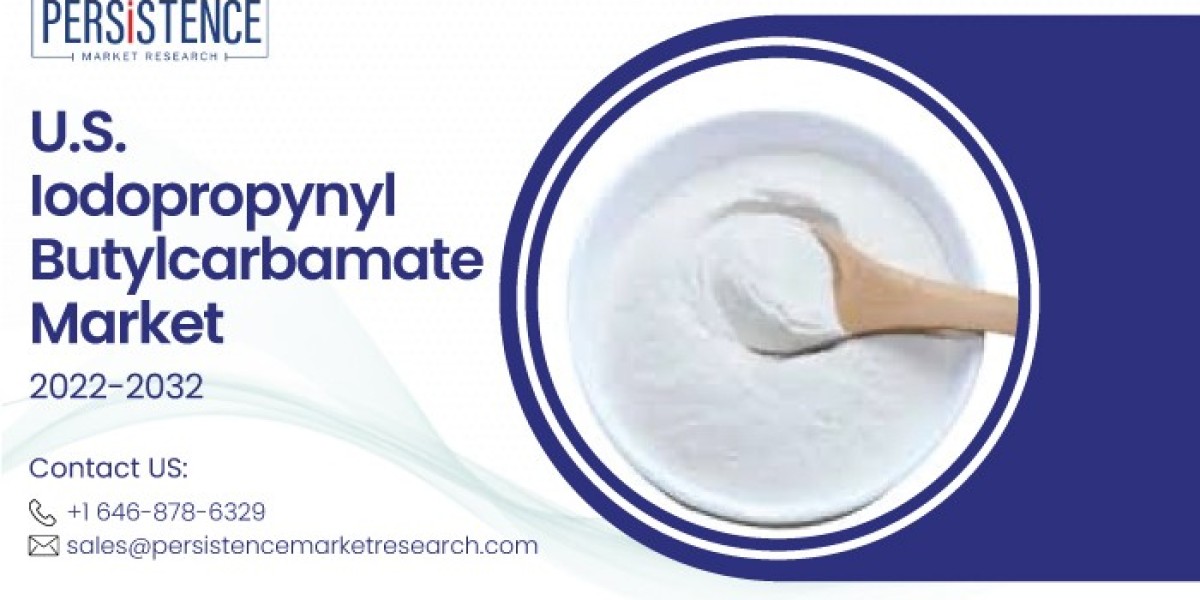In the world of skincare and cosmetics, it's crucial to understand the ingredients in the products we use daily. Among the many preservatives that ensure the safety and longevity of beauty products, Iodopropynyl Butylcarbamate and Diazolidinyl Urea are two common preservatives often found together in product formulations. But what are they, and why are they used together?
What is Iodopropynyl Butylcarbamate?
Iodopropynyl Butylcarbamate (IPBC) is a preservative widely used in cosmetics, skincare, and personal care products to prevent the growth of harmful microorganisms like bacteria, fungi, and mold. Since many beauty products contain water, which is prone to contamination, preservatives like IPBC are essential to maintaining the safety and stability of the formulation.
Key features of IPBC:
- It is effective at very low concentrations (usually less than 0.1% in leave-on products).
- It is a broad-spectrum preservative, meaning it fights against various types of microbes, including bacteria and fungi.
- It is approved by regulatory bodies like the FDA and the European Commission for use in cosmetics at low concentrations.
IPBC is often found in products such as moisturizers, shampoos, conditioners, makeup, and sunscreens, where microbial contamination could be a risk.
Read More: https://www.persistencemarketresearch.com/market-research/us-iodopropynyl-butylcarbamate-market.asp
What is Diazolidinyl Urea?
Diazolidinyl Urea is another preservative used in cosmetics and personal care products to prevent bacterial growth. It belongs to a class of preservatives known as formaldehyde releasers. These preservatives release small amounts of formaldehyde over time, which acts as an antimicrobial agent to keep products safe from contamination.
Key features of Diazolidinyl Urea:
- It is widely used in water-based products like creams, lotions, and makeup.
- It helps extend the shelf life of products by preventing bacterial contamination.
- It releases very low amounts of formaldehyde, which is highly effective at killing bacteria and other microorganisms.
Diazolidinyl Urea is considered safe for use in cosmetics when used in regulated concentrations. However, because it releases formaldehyde, it may cause irritation for some individuals, especially those with sensitive skin.
Why Are Iodopropynyl Butylcarbamate and Diazolidinyl Urea Used Together?
Iodopropynyl Butylcarbamate and Diazolidinyl Urea are often used together in formulations because they provide complementary preservative benefits. While IPBC is particularly effective against fungi and mold, Diazolidinyl Urea is more potent against bacteria. When combined, these preservatives offer broad-spectrum protection that keeps a product safe from various microorganisms that could cause it to spoil or become unsafe for use.
This combination ensures that both bacteria and fungi are effectively controlled in the formulation, making it a popular choice for cosmetic products that contain water, which is a breeding ground for microbial growth.
Are Iodopropynyl Butylcarbamate and Diazolidinyl Urea Safe?
Both Iodopropynyl Butylcarbamate and Diazolidinyl Urea are considered safe when used within the concentration limits established by regulatory authorities such as the FDA and the Cosmetic Ingredient Review (CIR). However, it's important to be aware of potential side effects, especially for individuals with sensitive skin.
Potential Side Effects of Iodopropynyl Butylcarbamate
- Skin Irritation: Some individuals with sensitive skin may experience irritation, such as redness or itching, especially with leave-on products.
- Contact Dermatitis: In rare cases, allergic reactions may occur, resulting in contact dermatitis. This is more common in individuals who are sensitive to preservatives.
Potential Side Effects of Diazolidinyl Urea
- Formaldehyde Sensitivity: Since Diazolidinyl Urea releases formaldehyde, individuals with formaldehyde allergies or sensitivities may experience irritation or allergic reactions. Symptoms may include redness, itching, or rashes.
- Skin Irritation: As a formaldehyde-releasing preservative, it may cause irritation in sensitive skin types, particularly in leave-on products.
Who Should Be Cautious?
While Iodopropynyl Butylcarbamate and Diazolidinyl Urea are safe for most users, certain individuals should be cautious:
- People with Sensitive Skin: Those with sensitive or allergy-prone skin may want to avoid products with Diazolidinyl Urea due to the risk of formaldehyde release.
- Individuals with Allergies: If you have a history of allergic reactions to preservatives or formaldehyde, it’s important to check product labels and avoid ingredients like Diazolidinyl Urea.
- Infants and Children: Since children have more sensitive skin, consult a pediatrician before using products containing formaldehyde-releasing preservatives like Diazolidinyl Urea.
How to Identify Iodopropynyl Butylcarbamate and Diazolidinyl Urea in Products
If you’re looking to identify these preservatives in your skincare or beauty products, here’s what to look for on the ingredient labels:
Iodopropynyl Butylcarbamate may also be listed as:
- IPBC
- 3-Iodo-2-propynyl butylcarbamate
Diazolidinyl Urea may also be listed under its full name without abbreviations. Both ingredients are typically found toward the end of ingredient lists since they are used in small concentrations.
Alternatives to Iodopropynyl Butylcarbamate and Diazolidinyl Urea
If you have sensitive skin or prefer to avoid formaldehyde-releasing preservatives, there are several alternatives that offer effective preservation without the associated risks:
- Phenoxyethanol: A popular alternative preservative known for its gentle profile and antimicrobial properties.
- Sodium Benzoate: Commonly used in natural or organic products, this preservative is considered milder for sensitive skin.
- Potassium Sorbate: Another natural preservative that offers protection against mold and yeast, often found in organic beauty products.
These alternatives provide antimicrobial protection while minimizing the risk of irritation for sensitive skin types.
Final Thoughts: The Role of Iodopropynyl Butylcarbamate and Diazolidinyl Urea in Cosmetics
Iodopropynyl Butylcarbamate and Diazolidinyl Urea are widely used preservatives that play a vital role in protecting beauty and personal care products from microbial contamination. When used together, they provide broad-spectrum protection against bacteria, mold, and fungi, ensuring that products remain safe and effective for longer periods.
While both preservatives are generally safe, individuals with sensitive skin or formaldehyde allergies should take caution, especially with products containing Diazolidinyl Urea. As always, it's a good idea to perform a patch test when trying new products, particularly if you have sensitive skin or a history of allergic reactions.
By understanding these ingredients and their functions, you can make informed decisions about the skincare and beauty products you choose to include in your routine.



